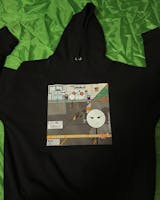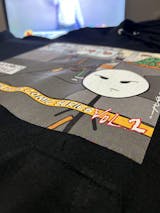It is important to master DTF printing technology, also known as “direct to film”, and understand its tricks. DTF technology, which provides a breakthrough in clothing decoration, offers versatile features. With DTF transfer, it becomes possible to obtain the best results on printed products. This printing method, performed through heat press, recreates custom clothing design.
DTF transfer stands out as the most used printing technology recently. With its unique machines and compatible inks, designs are transferred to films called custom gang sheets. These transfer films are then transferred to the fabric through heat. With this method, wonderful designs with unique details, high resolution, long lasting and long term durability emerge. Although these prints are applied to cotton, polyster or similar fabrics, they are among the best printing options for many fabrics. These prints enable lively and complex designs to last longer and remain the same as the first day even after a long time, paving the way for new developments in the clothing industry.
Heat press has a very important role in transferring the ink transferred to custom gang sheet to the fabric. Although heat press is a method used in many printing systems, the best results are provided by DTF printing technology.
DTF Printing and Hot Press Method
With the custom heat transfer method, heat ensures that the ink adheres to the fabric more smoothly. DTF transfer typically uses lower temperatures compared to other heat transfers such as sublimation. It is generally used in the temperature range of 300 F or 320 F. It is crucial to have knowledge of how to use special DTF films and printers to determine the appropriate temperature.
In addition to the heat press, it is also important to set the appropriate pressure. With the appropriate pressure setting, the ink is distributed evenly on the fabric. If little pressure is applied, the ink will not pass through the fabric incompletely or at all. If too much pressure is applied, the design and fabric may be damaged. In order to adjust the pressure, it is necessary to follow the heat press manufacturer's instructions. Pressure and temperature settings must be tested before starting production.
Another important issue in the DTF transfer system is time. Heat press application time has a very important place in DTF transfer technology. The ink is transferred to the fabric through the pressing process, which generally takes between 30-40 seconds. However, since these times may vary depending on DTF machines, it is important to take into account the printer manufacturer's recommendations.
DTF Printing Test and Calibration
In custom DTF printing technology, the material and fabric must cool down after the pressing process is completed. The transfer must be allowed to cool before the film is removed. The adhesion of the ink to the fabric is important in DTF transfer technology. You can find out whether the DTF film should be peeled hot or cold by reviewing the instructions.
In DTF technology, hot press settings need to be made, as well as calibration and test settings. Differences in the fabric to be printed, differences in equipment and printer may cause situations that need to be calibrated. In addition, it is important for occupational safety to wear heat-resistant gloves during the transfer process.
People can find many new methods to discover the tips and ease of use in DTF printing technology by experiencing it themselves. In general, the user manuals of DTF printer manufacturers contain instructions and information on how to use the machines and printing system. You can find your own tips by taking this information into consideration and experiencing it.








